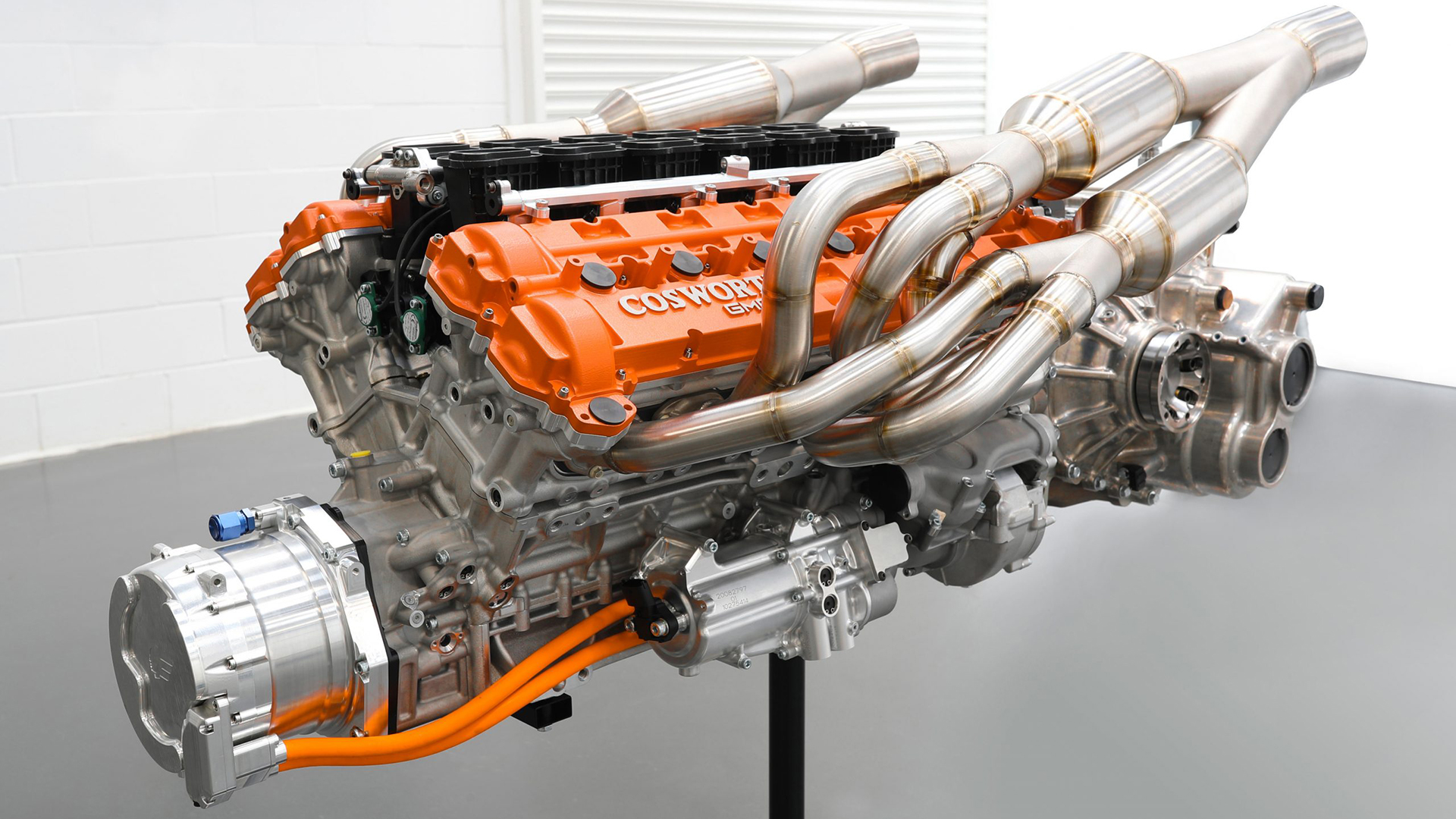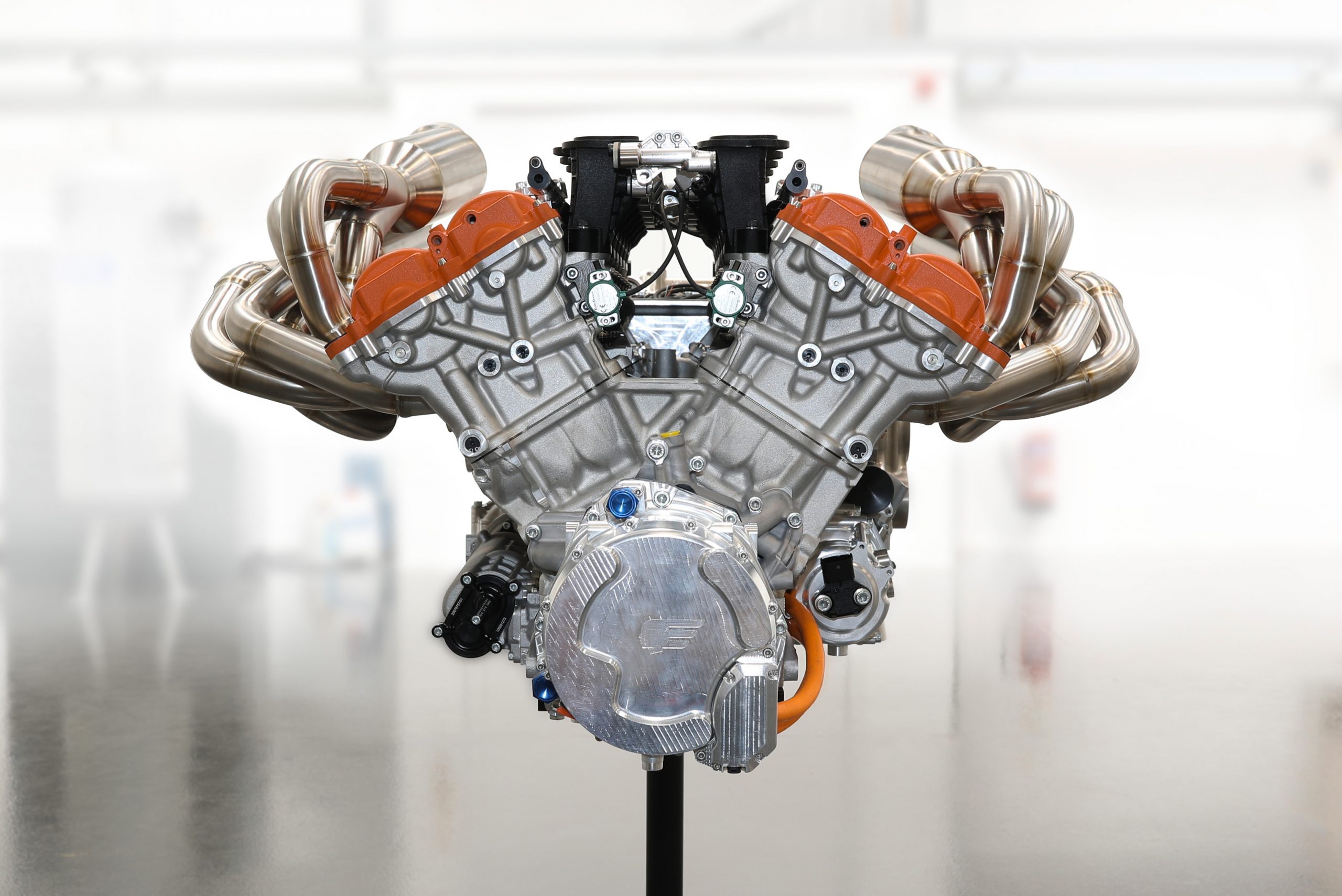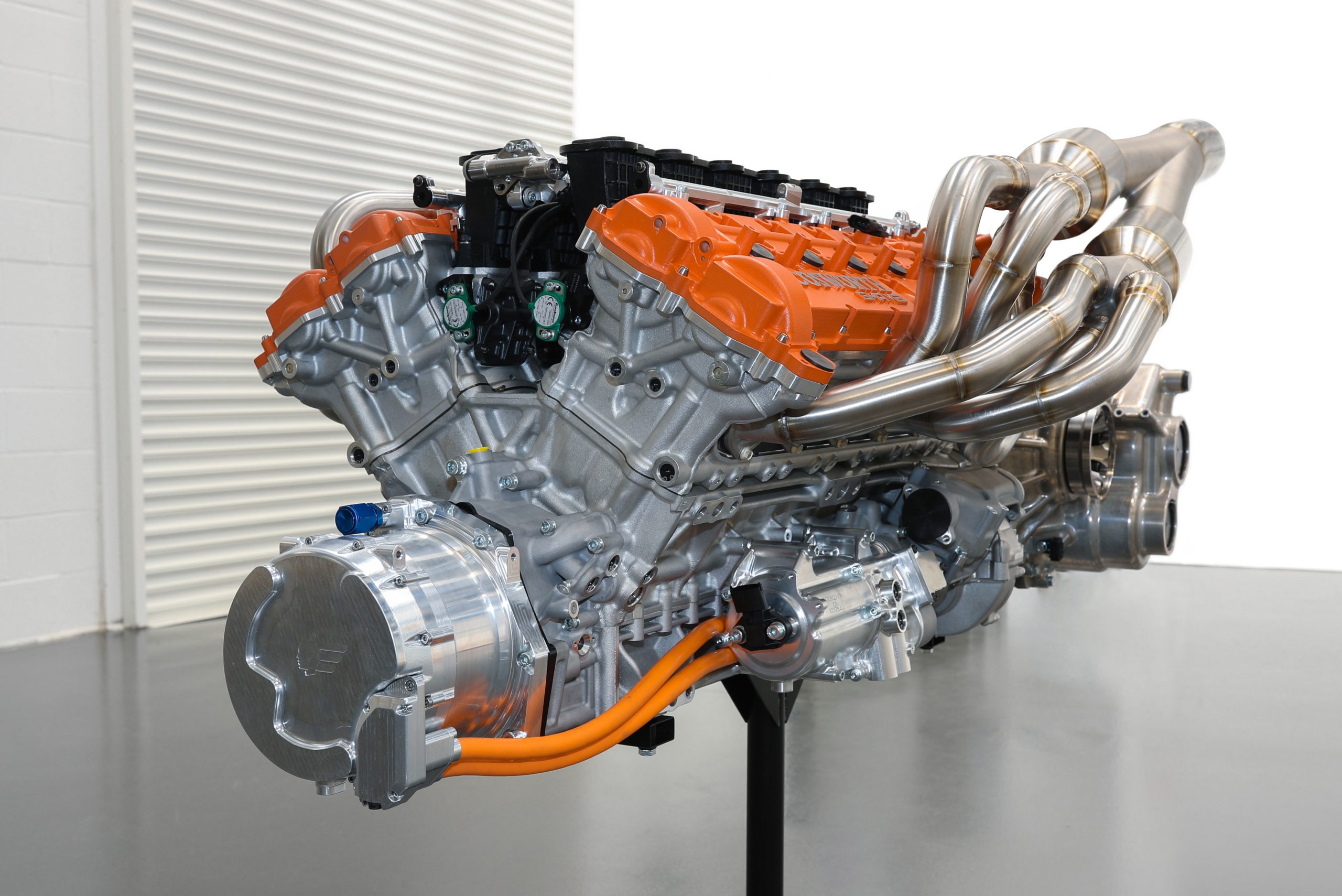

The first thing you may notice about the GMA-Cosworth V12 is that its beautiful titanium exhaust headers are angled upwards instead of pointing towards the floorpan like on your car. That’s because the T.50 is using such steep, aggressive diffusers that the piping with the four catalytic convertors have no choice but to proudly aim for the sky. The next visible curiosity is the complete lack of belt-driven accessories. This packaging (and durability) miracle was made possible by the Integrated Starter Generator (ISG), which operates at 48 volts to act not only as the high-rev starter and the alternator but also as the energy source of the rear fan and the A/C compressor at the front of the car.
Gordon Murray was never going to build a halo car powered by anything other than a naturally-aspirated V12. He considers a 65-degree twelve-cylinder to have perfect primary and secondary balance, which is crucial when the engine is a load-bearing semi-structural element of the chassis. According to him, V12s also make the best noise, along with enough low-end torque to work well at any speed. The T.50’s bespoke Cosworth offers 71 percent of its peak torque from as low as 2,500 rpm.

Initially, Murray wanted a 3.3-liter V12. However, to make the T.50 faster than a McLaren F1 with such a small engine, the T.50 needed to drop its wet weight to around 1,984 pounds. Since that wasn’t gonna happen, the team settled for a 3,994cc, all-alloy DOHC with dry sump lubrication and a compression ratio of 14:1.
As you’ve probably heard by now, this 392-pound jewel of a V12 revs to 12,100 rpm, producing up to 690 horsepower when the ram-air induction is engaged with the fan’s V-Max Boost mode. In 1998, the McLaren F1’s 6.1-liter S70/2 V12 sourced from BMW Motorsport pushed it to a record of 240.1 mph, but only after its redline was raised to 8,500 rpm.
Weighing 2,160 pounds with its 3.9-liter V12, the GMA T.50 has a better power-to-weight ratio than a McLaren P1 GTR.

28,400 RPM Per Second
12,100 rpm from idle happens in .3 seconds, which means this engine’s pickup speed is at 28,400 RPM per second. That sort of throttle response is unheard of from a road car engine, let alone one verified for at least 50,000 miles. However, the achieved figure is by no coincidence. Murray, the engineer who compares the rev-profile of turbocharged engines to “watching paint dry,” told Cosworth that his V12 needs to rev higher than his previous record holder, the Light Car Company’s Rocket, which features a 1000cc Yamaha bike engine redlining at 11,500 RPM.
After putting the crank as low as 3.34-inches from the bottom of the pan, Cosworth went for titanium valves and connecting rods, gear-driven cams, four throttle bodies, variable valve timing on both inlet and exhaust, and 12 individual 12-volt coils. However, to achieve such speeds, they also needed a very low-inertia triple-plate carbon silicone and titanium clutch with virtually no flywheel to speak of, which in this case is fitted for life. The clutch housing is also made of titanium.

The famously rev-happy BMW V12’s pickup speed in the McLaren F1 is around 10,000 rpm per second. With almost triple that pace from idle to redline, let’s not forget that with its clutch engaged, the T.50 comes with an equally rapid, nearly instantaneous decay. This means to make its six-speed manual transmission work, GMA’s halo car will feature a carefully calibrated rev-matching software that will blip the throttle just enough for the opportunity of a perfect shift.
When it comes to more recent motorsport-derived offerings, I wanted to learn about the throttle response of the Mezger engine tweaked by Williams Advanced Engineering for the Singer DLS, as well as Porsche’s latest 4.0-liter naturally-aspirated flat-six in the back of the GT3, GT3 RS and Speedster models. While Singer couldn’t give me a figure, Porsche told me that “from idle to 9,000 rpm, [the 4.0] should take less than a second.”
That’s close enough to a 1993 McLaren F1’s, yet far-far away from a 2022 GMA T.50’s. Still, in terms of pickup speed per dollar, hats off to Weissach!

Got a tip? Send us a note: tips@thedrive.com